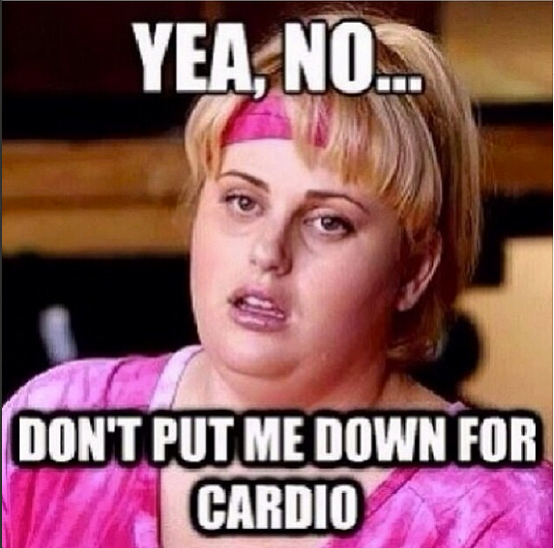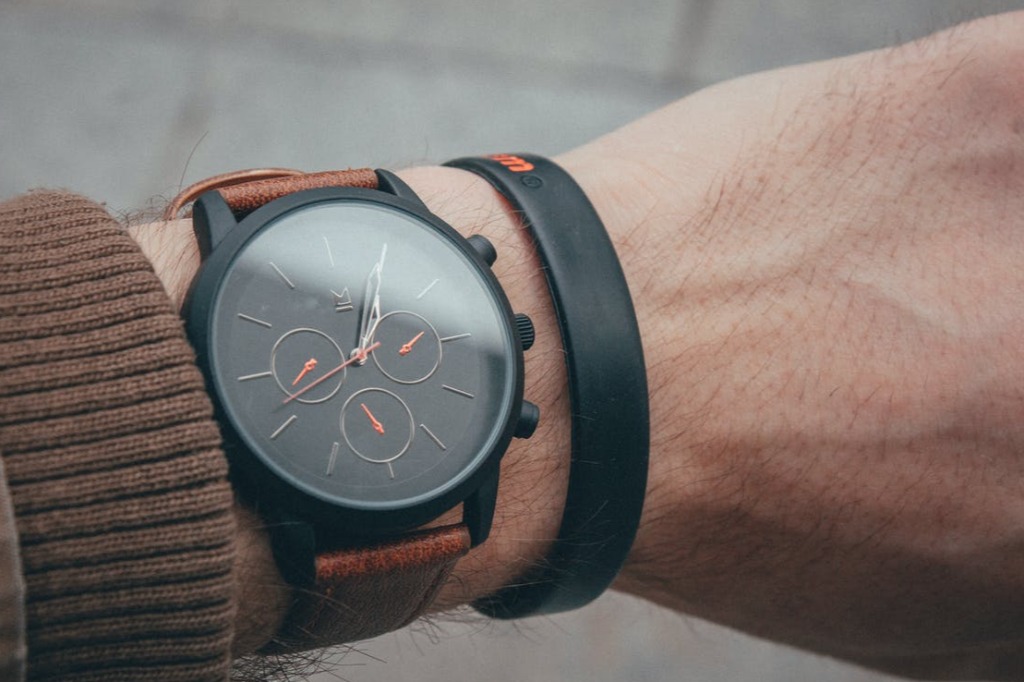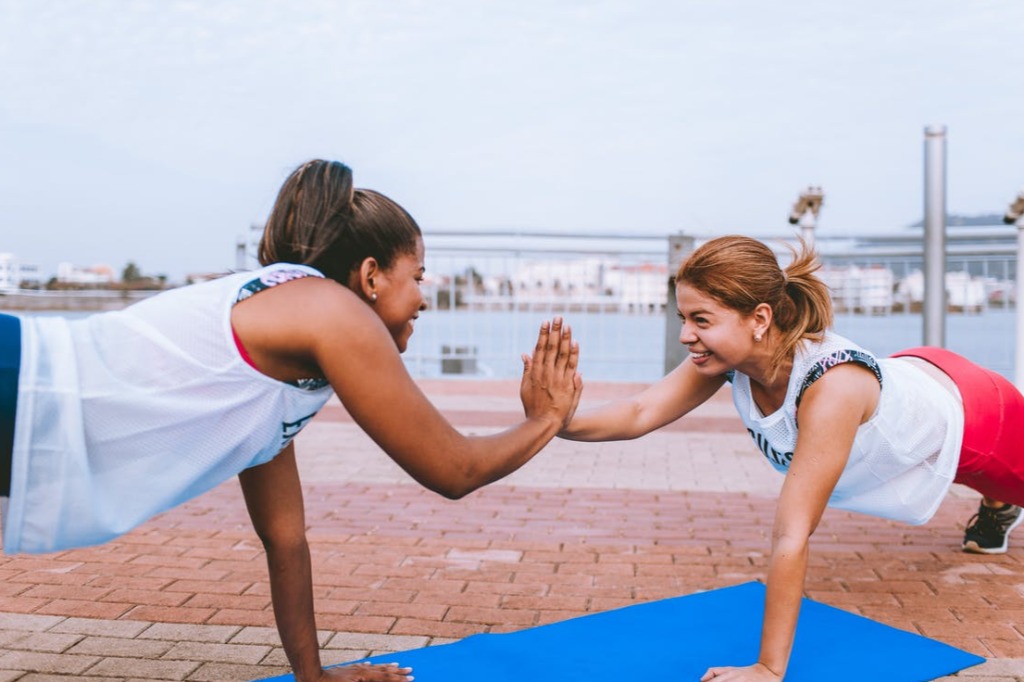
The Simple Fitness Habit: How to Get Fit When You Hate the Gym
I once spoke with a woman who was in her late 40s, and we were trying to get her back on track after about a decade of not eating right or exercising. Finally, it came time to talk about exercise, which is a sensitive subject for some people.
So I asked, “So what have you been doing as far as exercise goes?”
And she said, “I hate the gym.”
“Okay… why do you hate the gym?”
“It’s filled with narcissists and douchebags…plus everyone stares at you.”
It gave me a bit of a laugh, but there was more than a bit of truth to it. The Narrative, a huge concept in my book, was getting loud and overwhelming her.
All of us have our reasons for not going to the gym, but most of us also know that the Oreo milkshake goes somewhere unless we decide to do something.
Here’s a process I’ve used to help anyone start the exercise habit, starting at the inner game, and then going to sample workouts, and staying the course when the course sidelines are filled with doughnuts and Oreos.
And yes, you can stay home to avoid people so tan they resemble sweet potatoes.
“I Hate All These Bloody Narcissists” And Other Reasons We Hate The Gym

There was more than a grain of truth behind what my client said regarding hating the gym – the women as orange as sweet potatoes, people staring at each other, guys dropping weights. But overwhelmingly, when I talk to people, I tend to always hear alot of the same thing: we talk about the gym, but we rarely talk about how it makes us feel.
Then again, I guess it’s like relationships – we talk about “marriage” but it’s not okay to hate on your spouse, right?
It seems like it’s all about the gym, but more often, it’s about us. So even though sally sweet potato can make another woman feel intimidated, maybe the other woman feels intimidated because she feels like she doesn’t belong – like this gym is full of already fit people, which is like a poor person walking into a room full of millionaires.
It just feels, well, weird. Almost like you’re being judged just for stepping in there.
Half of the “game” behind exercise is the inner game.
What’s Up With The Narratives?
Miss sweet potato aside, there are a couple narratives that tend to crop up quite a bit when it comes time for the gym.
“I’m too busy, plus it’s far away.”
“I don’t even know what to do there.”
“I hate seeing the people there.”
“I hate having people there stare at me.”
… Now here’s the juicy kicker. None of these are actually true. We aren’t too busy, we DO know what to do, we’re okay seeing the people there (even if we may not like it).
What gives?
There’s always a story behind the story, there’s another layer that isn’t being shed here. If it were THAT SIMPLE, why couldn’t we easily fix them like this?
I’m too busy. ==> Do a home workout.
I don’t know what to do ==> Google it (30 sec)
I hate seeing the people there ==> Do a home workout, or if it’s specific people, go at another time.
I hate being stared at ==> Do a group class, or do a home workout
Technically, it’s that simple. Yet we still don’t exercise – which is proof that it’s actually not simple and logical, it’s usually emotional. Like everything I come back to here, it’s an inner game.
“No really, it’s not you… it’s me.”
Seems like that good ‘ol relationship advice is true, eh?
“No, really… it’s actually me… not you.” It’s pretty accurate, but it can be an uncomfortable truth for us to have to think about.
I was talking with a friend around the last new year, and he was saying how he was ridiculously confused he was about what to actually do to get started. He told me that he spent a couple hours googling “a bunch of crap” trying to figure it all out, and he was more confused after than he was before.
Really, you need just a couple new things:
You need to know what to do, how much, how to do it, and then how to not only get started, but keep doing it.
Booyaaaa, let’s get started and check ’em out.
Your Core Awesomesauce Workout
Based on my own experience as well as that of extensive research, the best body transformation results come from a mixture of weights and cardio. And yes, that means women. Yes, even women over 60.
Toning is a myth – you actually get toned from lifting weights and losing some body fat.
Part One – “Shake it Like a Salt Shaker” Bodyweight Workout
One of the most important principles here that people tend to avoid is lifting weights. It seems like it’s been so ingrained in our memory that the way to weight loss = running, that people don’t realize that, well, it isn’t.
You want to lift weights (whether it’s your body, or weights) because it changes body composition incredibly well:
- It gives you more muscle mass, which slightly increases your metabolic rate
- It helps you lose fat
- It tightens things up
- And the net result of all three? The tight, toned look that 95% of men and women want to look like.
That’s the raw truth.
So here’s a basic beginner workout I would recommend. It’s unsexy, but you can do it anywhere.
The beginner, bodyweight, do-it-anywhere circuit.
In whatever time amount you want (for example, 5 minutes, 20 minutes, 30 minutes), do the following circuit:
- 5 pushups (pushups on your knees are fine)
- 7 inverted rows
- 15 air squats
Here’s how to do a pushup:
Here’s an inverted row:
Here’s an air squat:
Part 2: An Interval Exercise For Your Heart Rate
Yeah, like I said earlier, people seem to have this weird idea that the best way to reaaaaaally skinny, reaaaaaaally quickly, is to start eating salad and running. Well, besides imploding your knees and not actually being that effective, nobody likes running.
So don’t do it, unless of course, you’re one of the weird people that actually likes running.
The second part here is simple: do a basic kind of cardio exercise that gets your heart rate up (that isn’t necessarily with weights), but also do it in intervals.
So, if you’re really far away from your goal and you’re looking to get started, it could be as easy as walking intervals.
Walking Interval 101
Total time: 10 minutes
- Minute 1: Walk at a brisk rate, 60 seconds.
- Minute 2: Double your walking speed, 60 seconds.
- Minute 3: Return to your normal, slightly brisk walking speed, 60 seconds.
- Minute 4: Double your walking speed, 60 seconds.
- Minute 5: Repeat this on-off-on-off tempo for 10 minutes.
- Minute 6-10: repeat.
Here’s what’s cool – you can substitute pretty much anything for this – yoga, running, whatever you’re into.
Slaying Dragons and The Quest to Create The Habit of Exercise
Let’s cut to the chase:
Almost anyone knows that going to the gym will make them lose weight, feel better, and have more energy. Literally, most humans on the planet get that. But if it were really that simple… why do most of us (who need to take our own advice), not actually do this?
We talked at the start here about The Narrative, which is a big concept in my book because, overwhelmingly, it’s HARD to get started. It’s really freaking hard to yourself in the gym if you don’t like it (for any number of reasons). Even if you know it’ll help you feel better.
Do kids like choking down pills the size of small hamsters, even when they know they’ll feel better after?
Hell no!
Whelp, adults are no different. So when it comes to starting the habit of exercise, there’s a systematic approach I’d take, which is basically slaying your own inner dragons.
Slaying Your Inner Dragons
What’s your dragon?
Time? Energy? Wanting to avoid the people in the gym? The first step to cultivating the habit of exercise is understanding that the main reason we don’t stick with the habit is going to be unique for each person.
For a lot of people, it’s the subjective feeling of time.
How in the hell do you find time to do a 60 minute workout after working ten hours and then needing to be home for your family, kids, or other commitments? Uhhh…
Other people just don’t have the energy. How the hell am I supposed to lift weights for an hour if I can barely stay awake staring into my boring computer screen filled with excel sheets? I’m already tired.
And for others, it’s because of the gym atmosphere itself – seeing the meat heads, the overly tan sweet-potato women, and everyone in between, makes you want to run away. Fast. Well, here’s how you can begin to get over some of these barriers, because they will inevitably crop up again.
“I don’t have time for this crap.”
Most of the time, when we say we don’t have time, we mean that mentally we feel like something takes a lot of time.
Obviously, we could do a 20 minute workout instead, but what would be the point right? Wrong. I actually personally focus on 45 minute workouts, because it psychologically feels lot shorter than 60 minutes.
You can start at 10, then go to 20, 30 and eventually whatever you want.
It’s sa-weet, and a great way to trick your mind into making time.
But there’s another cool exercise I want you to do here: the handshake technique. I interviewed Brian Grasso some months ago, who is a mindset coach that has coached national and olympic athletes, CEOs, and everything in between.
And can you guess who the busiest people in the world are? No, seriously, guess. CEOs. Here’s what he did:
- He knew that he needed to have them prove to themselves they had time. Everyone wants their time, and they have a to-do list a mile long. Brian was trying to turn CEOs into regular exercisers when he realized that their main objection was time. He knew they’d feel better, but he knew they also needed to put in the time first to see how they’d feel.
- He had them come to the gym for only 1 minute. So what he did was the following: for a couple weeks, he’d actually have the CEO come in at 6 am, shake his hand, then leave. Literally, that’s it. He’d have them shake his hand and then leave. And what this did was train them to show themselves that they actually did have time for this, and that they could make time for this.
- The eventually proved to themselves that this was worth it (and they had time). Once they showed up for a couple days, they figured, “eh, i’m here already, might as well get a quick workout in.” After doing a ten minute workout, almost anyone feels better and can be convinced to keep going. After repeating this behavior for a couple weeks, they were sold and it was much easier to get them to do a full workout.
So if you find yourself dealing with this same kind of internal battle, decrease the mental game you play with yourself.
60 minutes sounds like a crapload? Then do 30. 30 minutes still too much, and you find yourself skipping? Then do 15 minutes. 15 minutes too much? Then do 5. And if you literally can’t get yourself to go for a five minute walk, go for a minute walk. You’re laughing – I can see it – but it works.
“I don’t have energy for this crap.”
 When you aren’t sleeping enough, you’re eating junk, and your life is lacking flow and is unexciting, not having enough energy will ruin more than just your workout. What’s the underlying idea here? The underlying idea is that exercise = requires tons of energy.
When you aren’t sleeping enough, you’re eating junk, and your life is lacking flow and is unexciting, not having enough energy will ruin more than just your workout. What’s the underlying idea here? The underlying idea is that exercise = requires tons of energy.
So how do you prove to yourself that this isn’t true?
Make it require less energy – a lot less energy – and show yourself how much better you feel. And one of the easiest ways to do this is just follow the tiny habits approach I write about here quite a lot, like this article I wrote on unconventional ways to get yourself motivated to exercise.
A few years back, I was reading some research done by a group that sought to figure out why most regular exercisers, people that have been doing it for decades, exercise, and they found one consistent trend: they liked how it made them feel.
Obviously, if exercising sounds about as fun as eating poo-flavored lollipops, this isn’t very good motivation at the start. What I want you to do is find the smallest number along this spectrum that feels easy to you – ready?
60 minutes (1 hour)
45 minutes (3/4 hour)
30 minutes (1/2 hour)
15 minutes (1/4 hour)
10 minutes (1/6 hour)
5 minutes (1/12 hour)
1 minute (1/60 hour)
Which one do you feel like you have the energy for? Pick that one, and go.
And here’s the kicker – remember how awesome you feel after. Even if it’s a super simple, brisk walk – how do you feel after? You may be breathing a bit heavy and your heart may be pounding, but don’t you feel a bit more, well, alive.
Awake?
Eventually, the more intense your workouts are, the more the amount of endorphins that will eventually be released.
The World’s Simplest Method For Sticking to Exercise – Like White On Rice
Cool beans.
Now we’ve tackled some the inner game stopping you from starting, you know the two basic principles, and you’re getting started here. But how do you stick with it?
Sticking with anything is really the secret sauce. Anyone can start, and many people DO start, but few people can keep going when it gets tough.
The Four-Part Master The Day Process
Here’s the process I outline in my book:
-
Start with your critical few habits
-
Track your daily success rate
-
Do a weekly review
-
Figure out your new habits for this week
Your Critical Few Habits
Usually, one of the most important things here is trying to actually figure out which habits are going to help you with the health, energy, and weight outcome you want. But for now, we know we’re talking about exercise, so we’re going to go with one of the habits I outlined above.
Your Daily Success Rate
At the end of each day, simply tally up the habit and whether or not you did it. I personally like to have a calendar near my office and my bed, and I just make a check mark if I did what I said I would.
Monday – Nope
Tuesday – Yep
Wednesday – Yep
Thursday – Nope
Friday – Nope
Saturday – Nope
Sunday – Nope
What’s the total tally for the day/week? 3/7
The Weekly Review
The weekly review is the secret sauce here: instead of writing down whether or not you did something, when you find yourself running into roadblocks and not exercising, you write down something important:
Why didn’t I do it?
You then use the barrier from this week to create your new habits for next week.
Say for example you wrote down “I only walked 10 minutes a day because I found myself too lazy to do it after work, I was tired and it was a long day.” On your weekly review, you’d write down, “too tired.”
For this coming week, you want to try something different then. In other words, what new habits can you implement to overcome that “I’m tired” barrier? Maybe you can go in the morning? Maybe you can do it on your lunch break? Maybe you can shorten the walk to even 5 minutes to lower the resistance to it.
Come up with a few new habits to overcome that barrier (in this case: low energy), and those become your new habits for this week. Each week you are continually evolving.
The New Habits For The Week
Based on the barrier you listed here, now you can think about your new habits this week, which could be:
- Morning. We mentioned that we felt tired and like we were lazy when it came time to do this exercise, which was because we tried doing it right after work around 7 pm. A new habit here to test would be to try the 10 minute walk before breakfast. 10 minutes is pretty easy to sneak in before work.
- Lunch. Another time during the way would be supplementing your lunch with the walk or – better yet – walking to a favorite restaurant or take out place, which automatically would count as your walk.
- A different exercise. Ultimately, if neither of these things are working, you could also try swapping it out for something else entirely.
Thoughts On This? Share below
So, there you have it. The ultimate guide to cultivating a super simple exercise habit.
Get over the internal stuff (since it’s almost all internal).
Get a simple routine (like the one I provided).
And then cultivate the right habits with the master the day process to make it happen on a daily level.
Thoughts on this simple fitness habit process?
Share them below.
-Alex
First image attribution: photo credit: N05/4935077281″>What time is it? | Others: freedigitalphotos.net








Your article is inspiring.
Thanks Sky! Hope it helped.